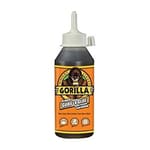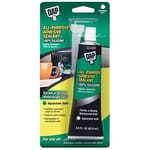Polyethylene terephthalate glycol, better known as PETG, is a great FDM material for light engineering applications, boasting toughness, impact resistance, and optical clarity (think PET bottles). Perhaps most importantly, it can survive at temperatures that would render most PLA filaments a soft, squishy mess.
In this guide, we’ll run you through the basics of gluing PETG, a handy trick to know when you’re dealing with larger, more complex prints. Depending on your application, different glues may be suitable for different mechanical and aesthetic results. As such, our goal is to cover a wide range of options, so that you’re prepared for any situation.
To kick things off, let’s take a look at why you might want to glue your PETG prints!
Why Glue PETG?
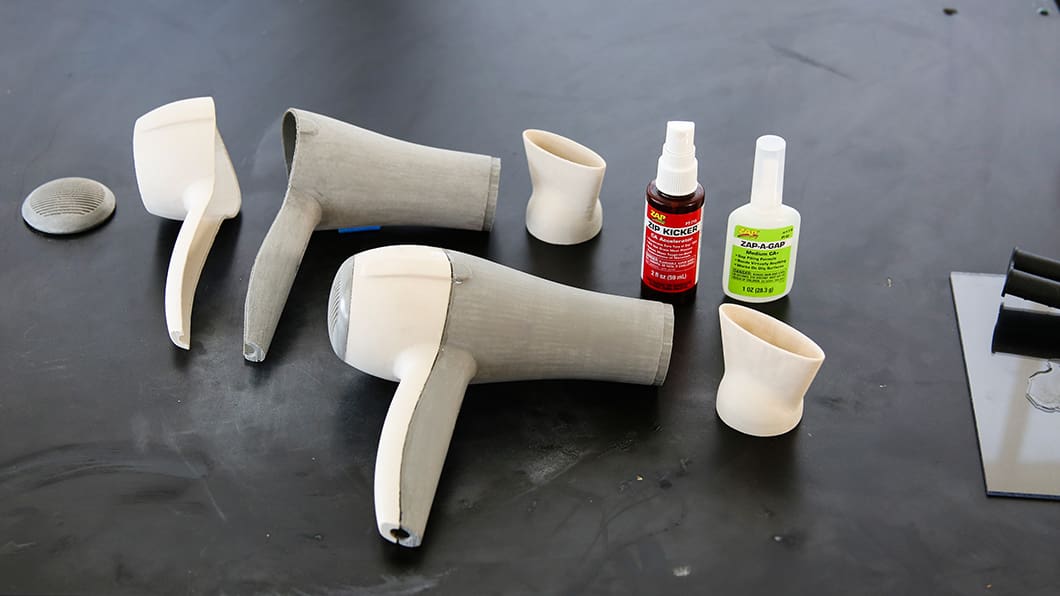
The main reasons for gluing PETG are similar to that of any plastic: You get to split your models for printing, as well as fix broken parts! When dealing with more complex models, this can yield stronger, cleaner-looking prints.
At its most basic, splitting and gluing a model allows you to optimize the printing orientation of each piece. Aesthetically, this means that you can minimize overhangs and steep slopes, getting cleaner results with less time and material spent. It also means you can print different parts in different colors, assuming you only have a single extruder to work with. Mechanically, it also means that you can orient the print layers and individually tune print settings to maximize strength.
Knowing how to glue also allows you to tackle prints that are too big for your printer, dramatically improving the versatility of your machine. Many human-scale cosplay models take advantage of this approach, bypassing the need for print services or large, expensive equipment.
Let’s dive into our list of the best glues for PETG, along with usage guidelines for each one! Keep an eye out for the differences that make them useful for different applications.
3D Gloop! PET Gloop

Our list starts off with an entry from the famous 3D Gloop! brand. PET Gloop is their specific formulation for PET, PETG, and other co-polyester blends. Useful as both a bed adhesive and a glue, it provides strong adhesive power in a very sticky form!
3D Gloop! claims that their product is designed to “provide the strongest bond between two 3D printed PETG parts, period”. While your mileage may vary on that, there’s no doubt that PET Gloop will give you a heck of a join.
- Surface preparation: Sand, clean, and degrease bonding surfaces.
- Usage notes: Apply ample Gloop to both surfaces before pressing or clamping together. Shake well before use, and allow at least an hour to cure. Do not apply to PEI or textured build platforms when using as a bed adhesive.
- Safety: Use in a ventilated area, and keep away from skin and clothing. Wear gloves. A respirator is recommended when dealing with larger volumes.
Super Glue
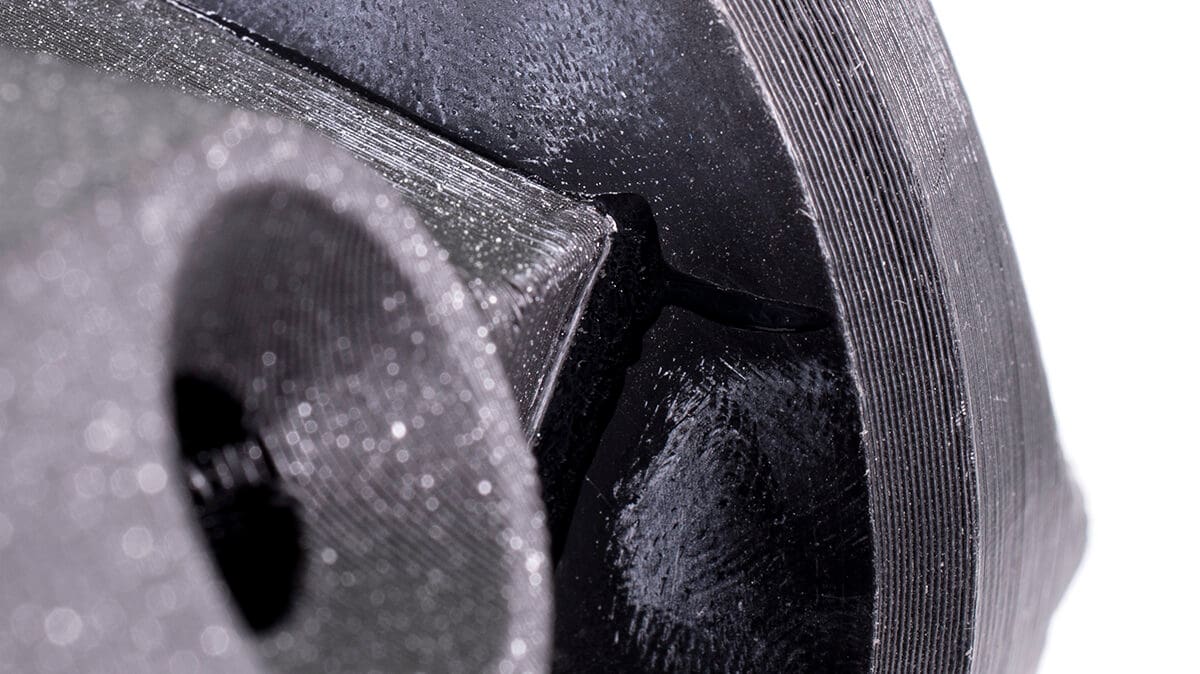
Next on our list is cyanoacrylate, also known as CA glue or, most commonly, super glue. An excellent all-rounder, CA is the easiest choice for most use cases. While certainly not the strongest or the most durable, it gets the job done and is easy to get your hands on. It also sets quickly for added convenience, with accelerators available for an instant hold; this makes it useful as a temporary clamp while a stronger glue sets.
You’ll find CA available in a variety of viscosities for increased versatility. Thinner formulations are great for getting into tiny cracks, while thicker ones can stay in place while you press the bonding surfaces together. In both cases, CA makes an excellent option for thin, near-invisible seams.
Because of its ease of use, availability, and low cost, super glue can be used on plenty of projects, such as mood vases that benefit from the higher temperature resistance of PETG (as compared to PLA).
And if you’re curious how this glue holds up in comparison to other adhesives, check out CNC Kitchen’s test of a few different versions of CA glue. Spoiler alert: Some perform better than others.
- Surface preparation: Sand, clean, and degrease bonding surfaces.
- Usage notes: Apply as needed. Use an accelerator for an instantaneous set. Usage may result in a white haze appearing on print surfaces (see image).
- Safety: Use in a ventilated area, and keep away from skin and clothing.
Polyurethane Glue

If you’re looking for something stronger and tougher, try polyurethane glue. A multi-purpose adhesive, it’s both sticky and waterproof, making for excellent durability. It’s also quite versatile given the availability of both rigid and flexible variants.
For 3D printing, polyurethane’s main drawback is that it expands while setting. While this is great for strength, it can also add more thickness to your seams, which may be unsightly and might create dimensional inconsistencies. In aesthetic applications, this makes polyurethane a less ideal choice.
Given PETG’s characteristics, for projects such as an outdoor Goosebumps witch (exposed to the Florida heat), it’s a great filament of choice. And because of polyurethane glue’s strength, it’s a great choice given the size and weight of the model.
- Surface preparation: Sand, clean, and degrease bonding surfaces. Dampen one bonding surface with a damp cloth.
- Usage notes: Apply ample glue onto the dry surface, as thickness is needed for a good bond. Clamp and leave to set for at least 1-2 hours.
- Safety: Use in a ventilated area, and keep away from skin and clothing. Gloves are recommended.
Silicone Adhesive
A similar alternative to polyurethane is silicone adhesive. Like polyurethane, it’s both flexible and weather-resistant, but it also shares the need for a thick coat to bond properly. Curing will take much longer than polyurethane (on the order of several hours), which can be a downside for many uses.
When buying, make sure to look for products labeled “RTV”, which stands for “room-temperature-vulcanizing”. These can cure at room temperature, which is much more convenient than having to use a separate curing agent.
- Surface preparation: Sand, clean, and degrease bonding surfaces.
- Usage notes: Clamp your parts while curing. Cure times vary, but they usually sit around several hours; refer to your product’s recommendations for the best guidelines.
- Safety: Use in a ventilated area, and keep away from skin and clothing. Gloves are recommended.
Epoxy
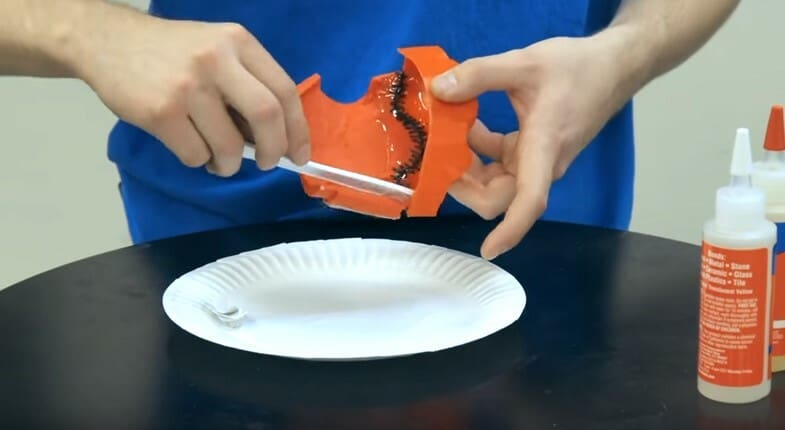
Another strong, versatile glue is epoxy. While still very durable, it shares a little more of super glue’s convenience and availability, making it an excellent choice for getting high-strength, load-bearing bonds. This has even been confirmed by testing. Thomas Sanladerer, for example, found that the epoxy glues were among the best performing, with the 3D print more likely to fail than the bond itself.
Epoxy typically comes in two parts, which are mixed together for activation. Depending on the formulation you buy, you have a few minutes to get the glue in place before it begins to set. A full cure can take more than a day, but the initial set is quick; this allows you to continue working after just a few minutes or hours.
- Surface preparation: Sand, clean, and degrease bonding surfaces.
- Usage notes: Note the working time on your specific epoxy, and work quickly to avoid it setting before it’s in place. Mix the epoxy on a disposable surface (e.g. cardboard) or in a disposable container (e.g. a plastic cup) before applying.
- Safety: Use in a ventilated area, and keep away from skin and clothing. Gloves are recommended.
Hot Glue
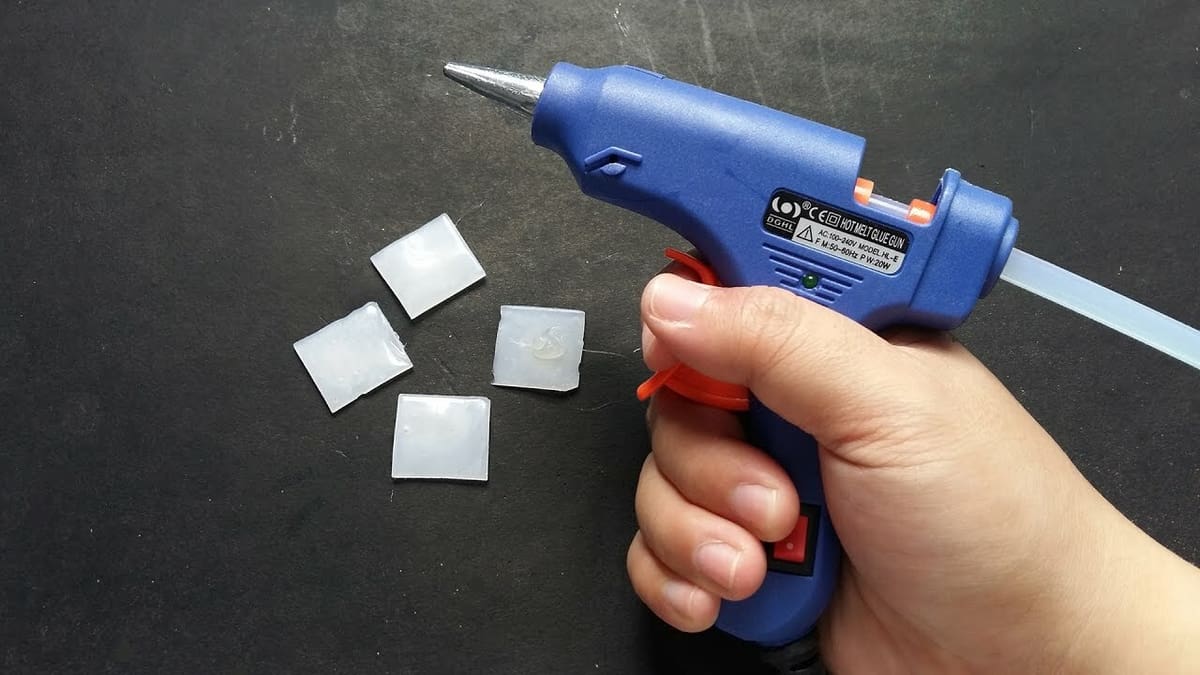
We’ve focused a lot on strength, but what if you just need convenience? Hot glue makes an excellent choice for these lighter applications. It’s not particularly strong, but it offers ample hold for less demanding uses.
As is appropriate for any quick-and-dirty solution, hot glue is easy to buy and even easier to work with. You can even accelerate or undo it for quick bonds and added peace of mind (see usage notes).
- Surface preparation: Sand, clean, and degrease bonding surfaces.
- Usage notes: Cooling can be accelerated by spraying from an inverted can of compressed air, which releases liquid refrigerant for a near-instantaneous hold. Bonds release easily when denatured alcohol is applied, such as with a syringe.
- Safety: Watch your fingers!
License: The text of "The Best Glue for PETG 3D Prints" by All3DP is licensed under a Creative Commons Attribution 4.0 International License.
CERTAIN CONTENT THAT APPEARS ON THIS SITE COMES FROM AMAZON. THIS CONTENT IS PROVIDED ‘AS IS’ AND IS SUBJECT TO CHANGE OR REMOVAL AT ANY TIME.




